Recent Articles
Popular Makes
Body Types
10 Things You Need to Know About the 2020 Porsche 911 Carrera S and 4S Cabriolet
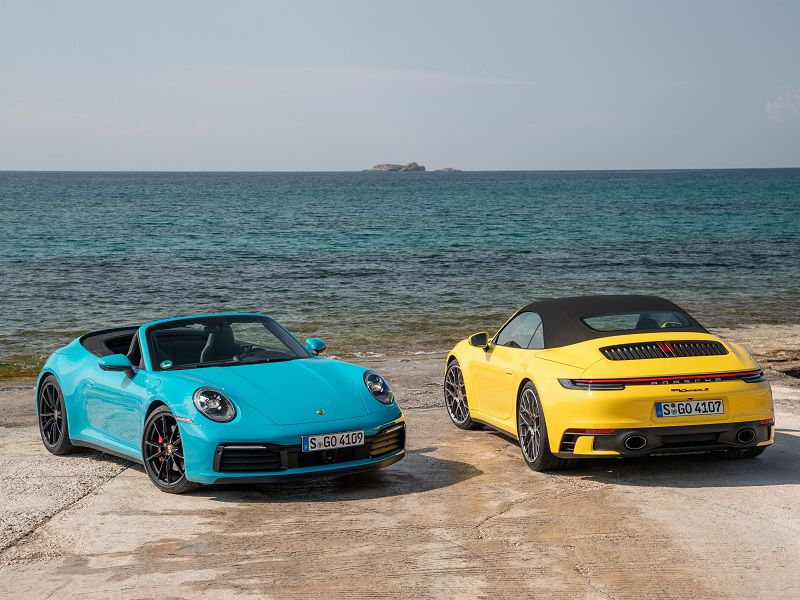
2020 Porsche 911 Carrera S Cabriolet Blue Yellow Front Rear ・ Photo by Porsche
Hot on the heels of the new 911 Coupe, the first convertible models of the eighth-generation sports car (internal code 992) have arrived. The 2020 Porsche 911 Carrera S and 4S will arrive at dealerships soon, bearing many of the updates and improvements that came with the new Coupe, including the wide body design previously featured on the Carrera 4 and GTS models.
The very first Porsche, the 1948 “No. 1” 356 Roadster, was a convertible. The first 911 convertible was the 1982 911SC Cabriolet. The 911 is different from most grand touring 2+2 sports cars. As it has been from the start in 1963, the 911 is a rear-engine, rear-wheel drive car. All-wheel drive was first offered in 1995 on the 993 Turbo, and engines went from air-cooled to water-cooled in 1999. Here are 10 things you need to know about the 2020 Porsche 911 Carrera S and 4S Cabriolet.
1. The first Cabriolet models will arrive in two trim levels: Carrera S and Carrera 4S.
In 2019, the 911 Cabriolet was offered in four trim levels: Carrera (rear-wheel drive); Carrera 4 (all-wheel drive); Carrera S; and Carrera 4S. For 2020, Porsche has revealed only two trim levels so far: Carrera S (rear-wheel drive) and Carrera 4S (all-wheel drive).
If past trends continue, expect to see Carrera and Carrera 4 models with slightly lower engine output and performance specifications (and marginally lower starting prices) to arrive later in the 2020 model year.
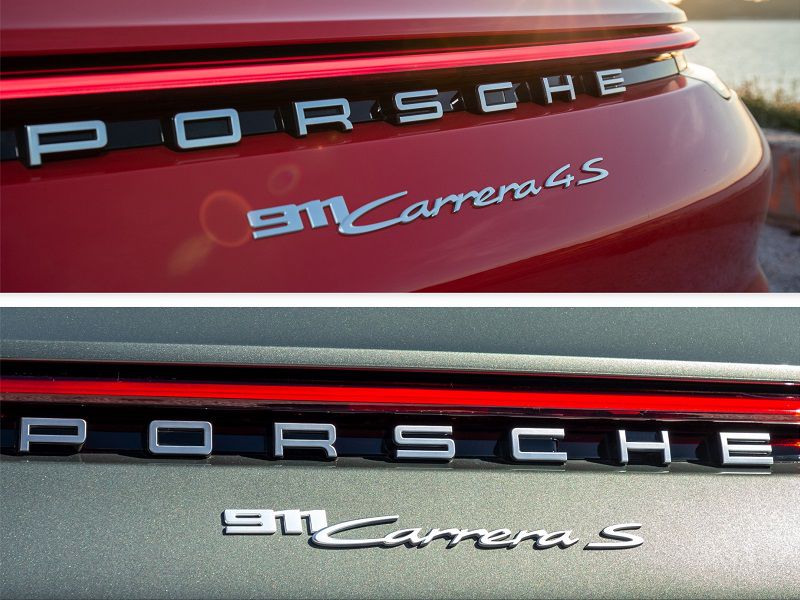
Photo by Porsche
2. The 3.0-liter engine is new – and more powerful than its predecessor.
The layout of the new 911 Carrera S engine is the same as before, but the 3.0-liter horizontally opposed flat-six Boxer now features a gasoline particulate filter, increased compression, and piezo injectors. New, larger twin-turbochargers replace the old units. The new turbos are symmetrical, and rotate in opposite directions, as opposed to the identical pairs used in 2019. The turbo wastegate valves are now electronically controlled rather than vacuum-controlled.
Altogether, the engine and turbo changes have resulted in output rated at 443 horsepower and 390 lb-ft of torque, up from 420 hp and 368 lb-ft of torque in 2019. The new engine gets a taller redline, too – 7,500 rpm vs. 6,500 rpm for 2019, and a flatter torque curve throughout the rev range.
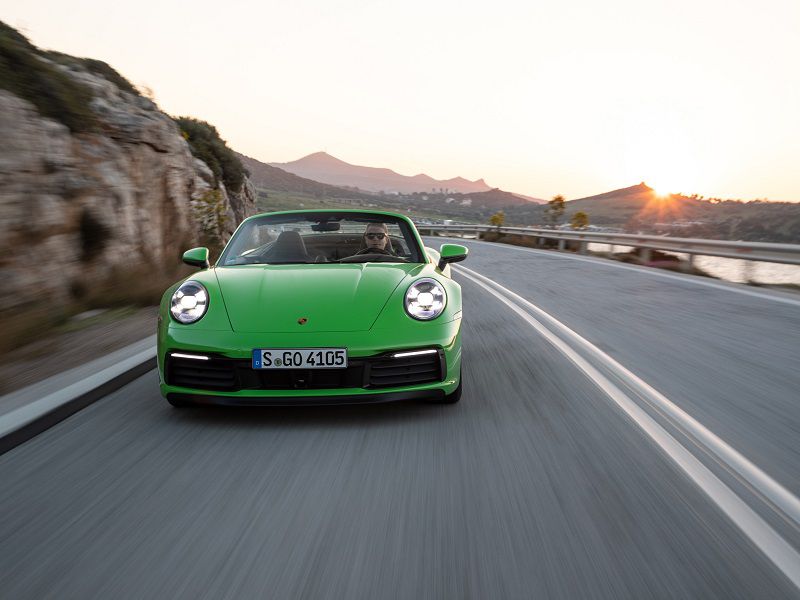
Photo by Porsche
3. It will come with a new eight-speed transmission at launch – and no manual.
Porsche is all-in on the dual-clutch PDK (Porsche Doppelkupplung) automatic transmission with paddle shifters. A new eight-speed version of the PDK is the only transmission available at launch for the 911 Carrera S Cabriolet. A seven-speed manual transmission is due to arrive later in the model year, but early adopters will have to forsake heel-toe shifting and other foot ballet.
The good news is that the new PDK is smooth-shifting, efficient, and well-matched to the new engine. The bad news is that the manual transmission continues to evaporate from the sports-car pool.
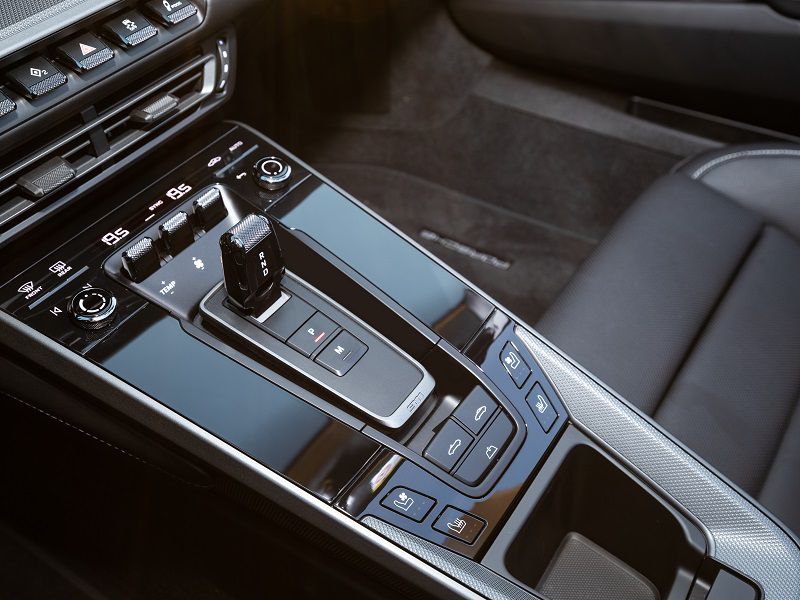
Photo by Porsche
4. The new soft top uses aluminum bows and magnesium panels.
A frequent complaint about soft-top convertibles like the 911 Cabriolet is that they can look clunky with the top up. Porsche designers and engineers have worked hard to refine the soft top for 2020 to achieve coupe-like lines and aerodynamics.
The top uses aluminum bows and magnesium panels to help maintain smooth curves when the top is up, along with efficient folding and packaging when the top is down. A new hydraulic motor, lighter and more efficient than before, handles operation, and the top is concealed beneath a smooth tonneau when it is down. A solid glass rear window with a defroster is standard, and the top manages to look good when in place. Not only that, the smoother air flow results in coupe-like quiet in the cabin.
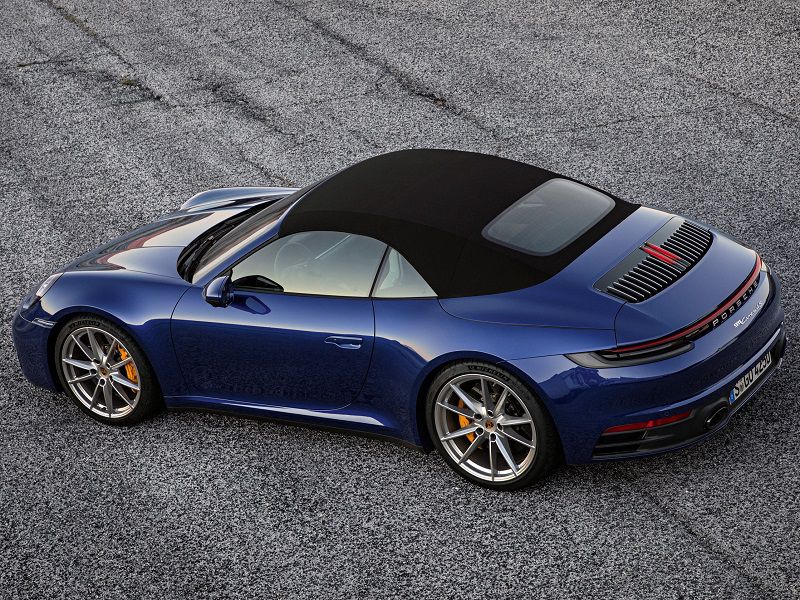
Photo by Porsche
5. The soft-top mechanism can operate while the Cabriolet is moving at speeds up to 31 mph.
The new hydraulic motor mechanism for the soft top is a marvel. You can operate the top while the 911 is in motion, opening or closing when driving at speeds up to 31 mph. The operation takes about 12 seconds from start to finish, and the top latches and unlatches automatically.
An integrated windscreen also deploys behind the passenger compartment, calming the air in the cabin even at highway speeds. You and your passenger can carry on a conversation without shouting, all while enjoying open-air cruising. You can also listen to music with the top down while in motion without blasting the stereo system – unless you want to crank the tunes for all to share.
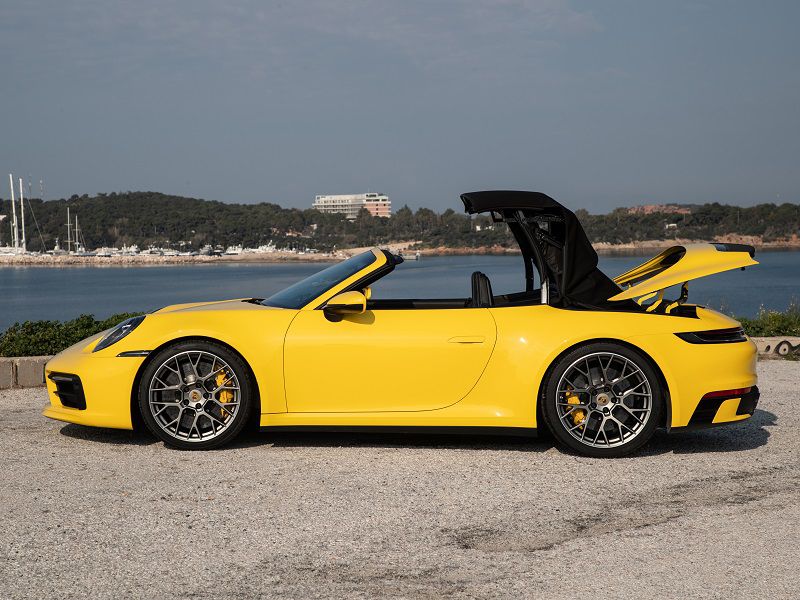
Photo by Porsche
6. PASM is standard on the Cabriolet.
Porsche Active Suspension Management (PASM) has been an option on 911 for a while, and it's now standard on Carrera S Cabriolet. The latest generation of PASM features dampers that have been newly engineered. They use magnetic force to continuously adjust a high-precision control valve to deliver the desired damping force at any time. Both rebound and compression stages are adjusted, and settings from Normal to Sport + are selectable.
An optional PASM sports chassis is also available, which lowers the 911 by 10 millimeters for greater agility on curves and more stability at high speeds.
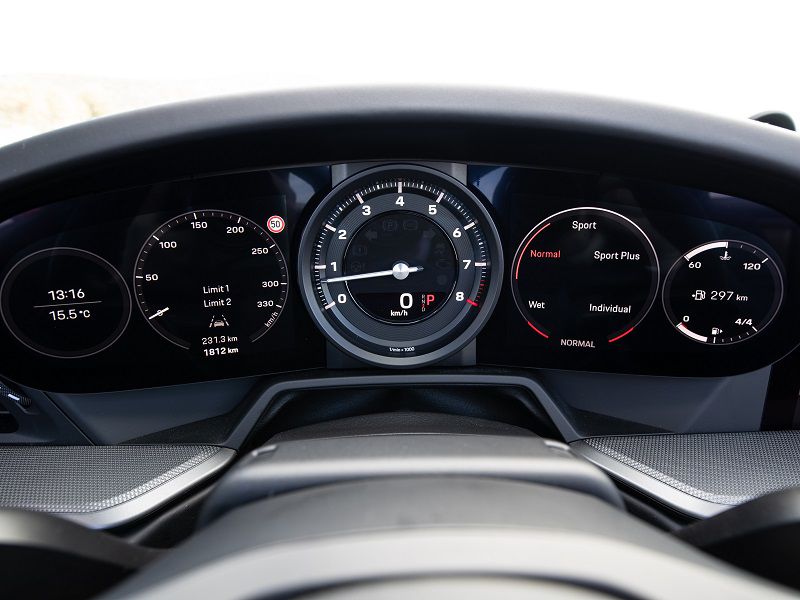
Photo by Porsche
7. Prices have risen by at least $8,700 over 2019.
The 2020 Porsche Carrera S Cabriolet will start at $126,100, and the Carrera 4S Cabriolet will start at $133,400. These prices are $12,800 higher than the 2020 Carrera S Coupe and 4S Coupe. The 2019 Carrera S Cabriolet started at $117,400, and the 2019 Carrera 4S Cabriolet started at $124,300, which means that the S has increased by $8,700 and the 4S by $8,900.
Standard content on 2020 models has also taken a step forward, most notably with the wide body, new top, and standard PASM, so the increase is understandable.
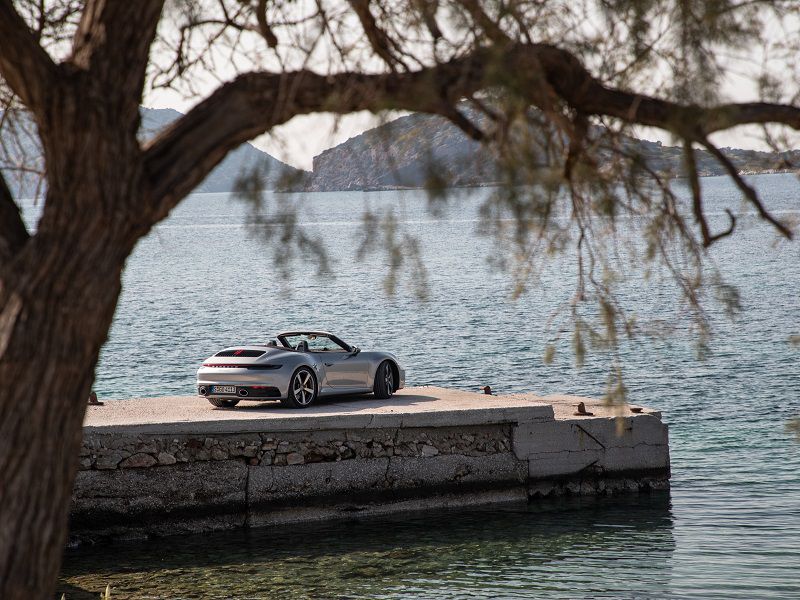
Photo by Porsche
8. The Cabriolet is both quick and fast.
Even though the 911 Cabriolet is a grand touring machine that is unlikely to see much track time, it is still a potent performer. The rear-wheel drive S Cabriolet can go from a standing start to 60 mph in 3.7 seconds on the way to a top speed of 190 mph. The all-wheel drive 4S Cabriolet is a tick quicker, capable of 0-60 runs in 3.6 seconds, and a hair slower, with a top speed of 188 mph.
Add the Sport Chrono package to either trim level, and you can shave 0.2 seconds off of the 0-60 time. The 2020 Carrera S Cabriolet models are about 0.6 seconds quicker to 60 mph than the 2019 models, and just 0.1 seconds slower than the 2020 Carrera S Coupes.
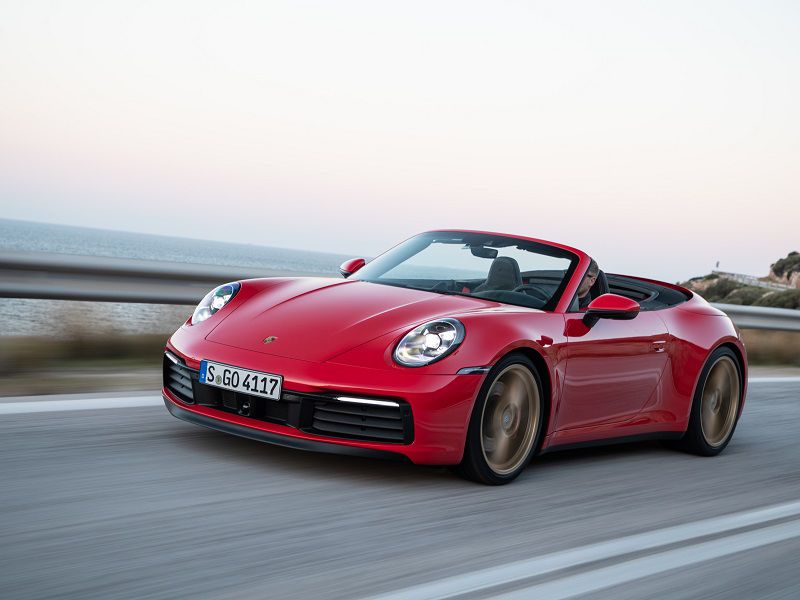
Photo by Porsche
The new Wet driving mode can detect moisture on road surfaces, and adjust accordingly.
A new Wet driving mode, which Porsche says is the world’s first, is now standard on the 2020 911. This system can detect significant moisture on the road automatically. It uses acoustic sensors in the front wheel housings to sense swirled-up splashed water, and then to precondition the response of stability management and traction control systems for wet conditions.
In very wet conditions, the system notifies the driver to manually switch to Wet driving mode. Once activated, stability management and traction control adapt to guarantee the best possible driving stability. The rear spoiler is adjusted to maximum downforce, the cooling air flaps open, and throttle response is flattened.
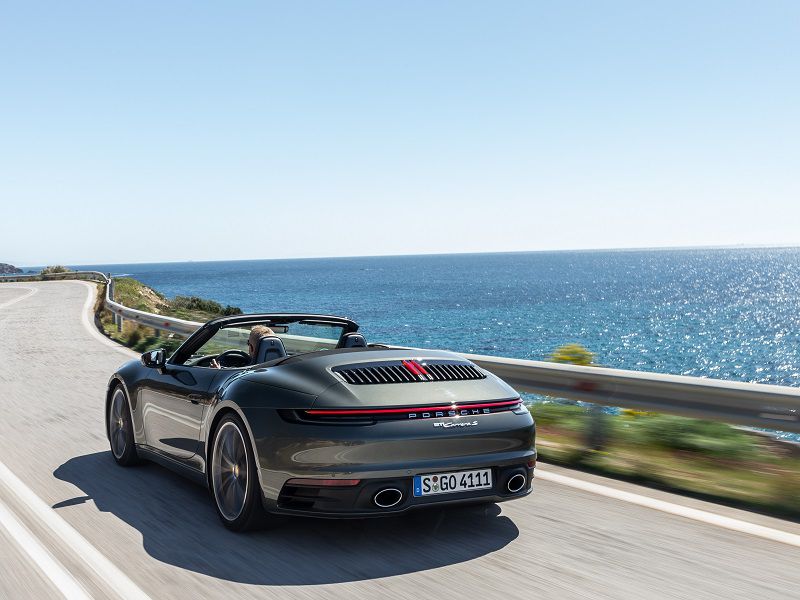
Photo by Porsche
10. Rear-axle steering is available as an option.
Two degrees seems like a small measurement, but when the 911 is in motion, it can mean a lot. Available rear-axle steering, as part of the Porsche Dynamic Chassis Control (PDCC) package, turns the rear wheels up to two degrees either in the same direction as the steering angle on the front axle, or in the opposite direction, depending on the situation. This makes the 911 more agile in low-speed maneuvers, like in urban traffic or parking situations, and improves handling in cornering at any speed.
DCC also includes active anti-roll bars that control body roll when cornering. The already nimble 2020 Porsche 911 Carrera S Cabriolet achieves an incredible level of handling with the inclusion of just two degrees of rear-axle steering, a mark of impressive engineering and attention to detail.
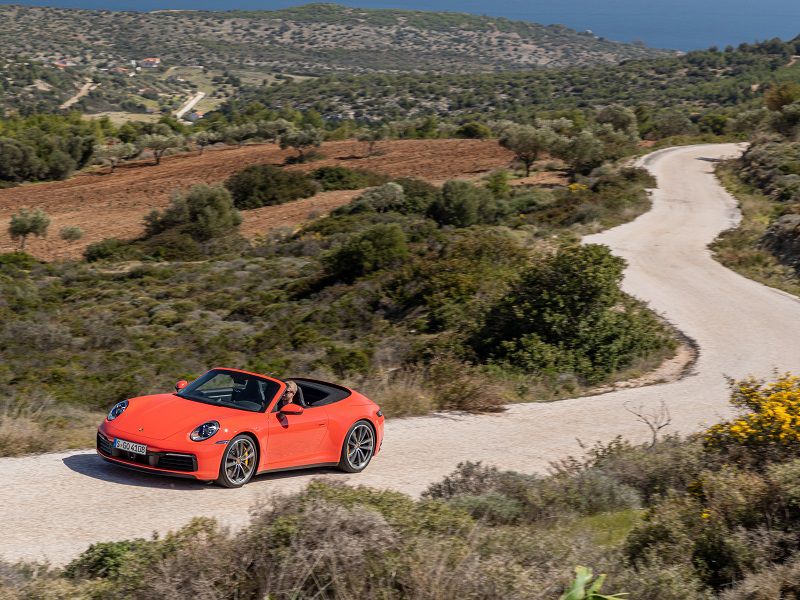
Photo by Porsche